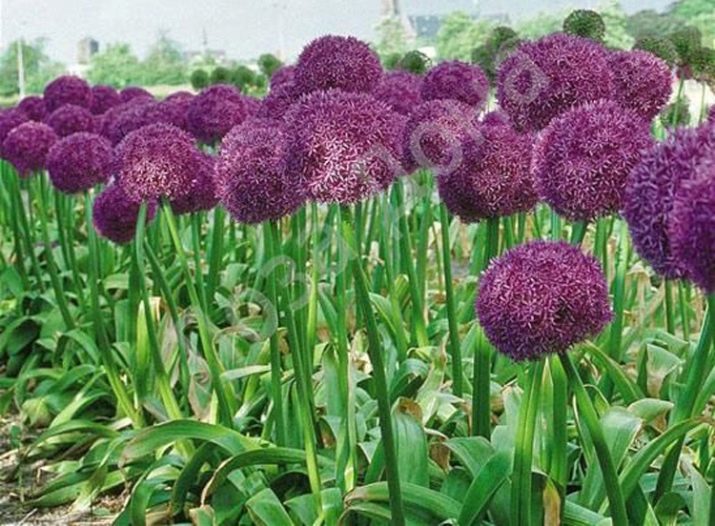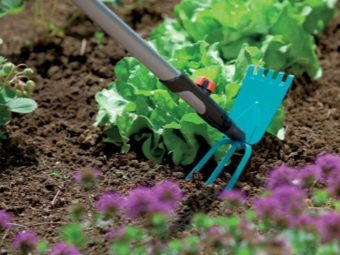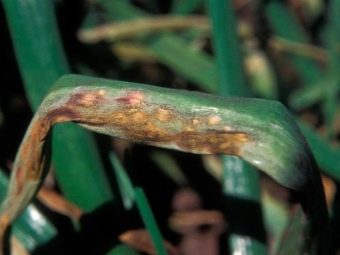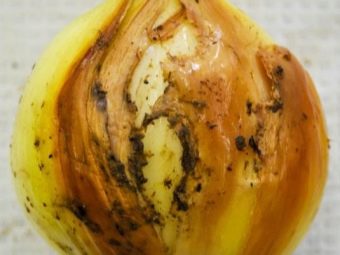Decorative onions: varieties and cultivation features
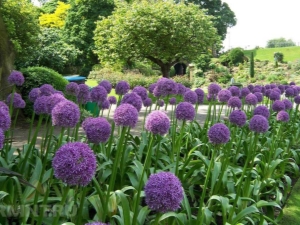
Ornamental onions, or allium, recently began to appear on the gardeners' areas, but its popularity is growing, and an increasing number of summer residents place it in their gardens. This plant is grown all over the world, as it is considered to be quite unpretentious. This onion grows easily in the garden, in a flower bed, will decorate the alpine slides, will give the charm of the garden. Alliami - representatives of perennial plants.
Thanks to the original colors of the caps from different flowers, you can collect alrii - wonderful combinations of bouquets. One of the important advantages of decorative onions is considered to be the choice of varieties. They will differ in flowering period, stem height, cap diameter. This article will help to understand the intricacies and features of care for an unusual plant.
Sorta
The Allium family has in its family more than 950 different species. About 130 of them are used in gardening. Some of them are even edible, but it is worth remembering that the feature of alliums is the increased content of essential oils, so they can be used in cooking, but the side effect will be a specific smell.
By the choice of varieties should be approached responsibly. Almost all the Aliums are long-lived. They can grow in one place for more than five years. To flower bed looked organically, it makes sense to pick up the variety so on the basis of the graduation ability of the peduncle. However, the variety of alliums, their colors, the structure of the inflorescences, the shape and height - all this may initially confuse even an experienced gardener. This article presents the main types of decorative onions that can decorate any garden.
"Globemaster"
Among the decorative onions can be found as tiny, and impressive for its size plants. "Globemaster" refers to the latter. In addition to its impressive size, this bow is famous for blooming from May to September, and this is a record among the rest of the family.
Globsmaster bulbs do not need frequent transplantation. Only after the leaves wither completely, which happens once every couple of years, the bulb is dug out, dried for several weeks, and then planted in the same place. The planting of this onion can be supplemented with flowers to taste. The fact is that the premature yellowing of the leaves can spoil the appearance of the flowerbed, and additional flowers will help to mask it. For the time of winter, the bow does not need shelter, and the next summer the huge balls will bloom again and the lilac color will fill the space.
"Roundhead"
Among the early flowering onions is considered the most common. Suitable for consumption in the event that collect it, until it has blossomed. Found on the territory of Europe, North Africa and Western Asia. For its shape and size, this bow is often compared to drumsticks.
The inflorescence is a ball in diameter, reaching 4 cm. The color is maroon-scarlet. The duration of flowering is 3-4 weeks and despite the fact that the leaves lose their attractiveness quickly, the flower continues to delight with its appearance for a long time.
This bow looks especially advantageous during group planting.
"Giant"
It is also called the giant bow. This name is fully justified. Its height reaches an impressive 150 cm. The diameter of the ball is up to 10 cm, the color is purple. In the wild, it can be found mainly in the territory of Central Asia, Iran. In appearance it resembles the “Supreme” bow. They can easily be confused if you do not know the distinctive feature - the inflorescence of a giant onion is decorated with thin silvery scales.
This plant prefers all the same conditions as most other alliums - an illuminated place in which the threat of flooding with melt water is minimized. Care is normal. The onion is dug out after the leaves are completely dry. This usually occurs in mid-July.At the same time, you can start cleaning the flower stalks.
"Christoph"
Named in honor of the entomologist Christophe, who first discovered this variety. Another name - "White-haired" bow, or "Persian star." It grows in the territory of Turkmenistan and Turkey, in the lower mountain belt. Unpretentious and cold-resistant plant has won the love of flower growers due to its unusual inflorescence, which is compared with an unusual animal - porcupine. The diameter of the flower cap can reach 25 cm.
The flowers resemble asterisks, and the color varies from light to bright purple. It blooms in June. The flowering period reaches one month. Since 1901, this type of onion is actively used in breeding.
"Lucy Ball"
Many types of decorative onions are able to decorate the garden, but among them there are those who are able to draw all the attention to themselves. The Lucy Ball, named after the American comedian Lucille Ball, was the result of a hybridization of two others — Aflatunsky and MacLean. This attractive allium will decorate the garden from late spring to early summer. Its round flower head consists of numerous dark lavender flowers. The plant feels great in the shade. Looks great in a composition with roses and Siberian irises.
"Pray"
The name is derived from the old Greek word. It meant one of the many plants. This bow stands out among the rest. In general, the color of alliums is represented by lilac and violet flowers. The bow “Moli”, which is also known as “Golden Garlic”, which in English means “golden garlic”, can boast of its bright yellow inflorescences. This onion grows throughout the Northern Hemisphere.
Its lance-like leaves, which can reach 5 cm in width, look great, it is a pity that they bloom when they bloom. But unlike other alliums, this feature does not greatly spoil the appearance of the onion, as the leaves shade the head of the inflorescence. Inflorescence itself is collected in a ball, consisting of large star-shaped flowers. They form a hemispherical umbrella, located on a low stalk. The flowering period occurs in June and July. The plant does not tolerate loamy soils with stagnant water. Transplantation is carried out every 3-4 years.
"Gladiator"
The size and color of this plant is impressive! "Gladiator" reaches a height of more than a meter. The arrow is crowned with a huge balloon-inflorescence of lilac-purple color, consisting of tiny flowers. With its dimensions, the bow looks very beautiful and looks great in bouquets. But if the onion is not cut, it can stand until the first frost.
In addition to the decorative function, "Gladiator" has another one - it is appreciated by gourmets, since its young leaves have a slight garlic aftertaste. This unpretentious representative of the Allium family is not necessary to dig. It winters well. It multiplies with ease, and every year produces more and more seeds, providing an attractive garden view for the years ahead.
"Schubert"
The bow of “Schubert” differs from the other alliums. Flowers on his hat are presented in two types. The first ones are fruitful, they reach a length of 5-8 cm. The barren, in turn, stretch for 20 cm or more. Petals are painted in pastel colors: pale pink, light lilac. The area of its growth in nature - Western Asia. Onion photophilous, it will suit well lit places. In relation to the soil is very austere.
Able to settle down on stony, clay and even sandy surfaces. Maintains temperature to-10 degrees. Care is reduced to moderate watering and weed removal. The plant looks decent in compositions with lupine, iris and poppy. Often used in the design mixborders or rabatok.
"Ostrovsky"
Onions "Ostrovsky", or "Gorolyubivy", often recognize the most beautiful among all stunted onions. Its height is only 20 cm, and the diameter of the cap reaches 10 cm or more.Masters of landscape design appreciate this variety for a variety of colors, which range from light pink to rich burgundy, as well as a pleasant aroma. Onion "Ostrovsky" decided to plant a group of 6-7 pieces. This is done so that a low bow is not lost in the alley.
It is combined with decorative mosses. Looks winning next to the bow "Pray". It is worth remembering that the leaves of the “Gorolyubivy” onion eventually lose their attractiveness. In this regard, it is necessary to plant the plant near the growing foliage, which will hide this defect.
When planting this plant should be borne in mind that it is not without reason that they are proud of themselves. Plant it better on an alpine slide or in rockeries.
"Squint"
"Oblique" onion is known by many other names: uskun, garlic onions, mountain garlic. In gardening is used relatively recently. It can often be found in the mountain ranges of Central Asia, in addition, it grows on the territory of the Urals. Recently, the number of "Slanted" onions in nature is declining, it needs protection. Breeders and botanists consider it an ancient plant, which appeared before the Ice Age and survived it successfully.
It is considered one of the first plants that appears after the snow melts. By its appearance and aroma, this onion clearly resembles garlic, so it is often eaten. It is well suited to meat dishes, it can be added to salads or canned along with garlic. The stalk of garlic onions reaches a height of 80 cm. It ends with a golden umbrella-inflorescence, consisting of fragrant flowers, in which seeds mature from 3 to 6 pieces. Seeds ripen closer to mid-August.
Onions are distinguished by high precocity. It is a honey plant. Perfectly complement any bouquet and stay in water for up to two weeks.
"Pskem"
The plant was discovered in 1905 in the territory of Central Asia. The name is associated with the river Pskem, near which it was discovered. It is suitable for food and is actively used in the national dishes of the Kazakhs and Kyrgyz. Good for seasoning and pickled. In the decorative plan is inferior in beauty to its fellows, but it can perfectly complement them. Inflorescences bloom towards the end of July, forming a neat white ball. Fruits in August. Caring for a plant is not difficult. The main thing is well-drained soil.
"Schnitt"
Translated from the German word "Schnitt" means a plant suitable for cutting. This onion is known in Europe as an ornamental and edible plant since the late 16th century. "Schnitt" is more suitable for food, rather than in decoration, but even there you can create an entertaining composition with it. The plant itself is a perennial. Reaches a length of 25-40 cm. Flowers are presented in different colors.
The main shade is purple, but often you can see lilac, blue and even pink among them. Blooms in May, blooms until August. Able to withstand light frosts down to -4, so it is preferable to dig up bulbs for the winter.
It has healing properties - it is useful to use it for vitamin deficiency, it is recommended for people who have suffered a myocardial infarction and all those who suffer from cardiovascular diseases.
"Hare"
"Hayer", or "Hair" - a hybrid of decorative onions, which is different from their companions. Its inflorescence is not so much a hat, as something resembling tentacles or hair standing on end. Flowering begins in the second half of May and lasts about a month.
Landing
A distinctive advantage of plants of the genus Allium is frost resistance. For this reason, it is best to plan your planting for the fall. Decorative onions will easily survive the winter, and in the spring, by the time the soil warms up sufficiently, it will drive away rodents, insects and all those who do not tolerate onion odor.
For the future, alaria will suit a well-lit place, protected from the wind by nearby buildings or landscape features. The soil of the future flower garden should be well ventilated, stagnant water should be avoided. As a drainage fit broken brick or expanded clay. Drainage should be filled with a layer of sand 10-15 cm, and above the ground to distribute. In general, land preparation should not cause difficulties. The depth of planting is on average about 2 times the diameter of the bulb itself.
The land should be covered with rotted compost, urea and mineral fertilizers can be added. It has been proven that potassium has a positive effect on plants from the Allium family, so it will be useful to add earth ash to the ground.
Depending on the composition of the soil, its acidity, lime or sand is added there, so the seeds will feel more comfortable. Landing site should be mulched
Sowing occurs in spring or autumn. The best option would be autumn sowing, so the result will be more noticeable. One of the important rules when planting Allium - respect for the depth of landing. When it comes to planting bulbs, we must remember that the pit should not exceed two diameters from the size of the seedling. The optimal distance between the bulbs is 40-60 cm.
Do not forget about the height of future plants. Under the high varieties, you should choose a place in the middle of the future alaria; you can decorate the border of the flower beds with low varieties by placing them along the edges.
As soon as the first shoots appear, it is desirable to feed them with urea at the rate of 1 tablespoon per 1 square meter. Sprouting watered with warm water, sprayed with a solution of "Epin Extra." After 2 weeks after these procedures, young plants are sprayed with Fervoit. This will enhance photosynthesis.
During the growing season, decorative onions do not need constant watering.
Breeding
Decorative onions can be propagated in many different ways - bulbs, seeds and bulbs. During the period of transplantation, and usually this time is in the autumn months, overgrown plant bulbs are sorted and planted at a certain distance from each other. This distance should not be too small, since the next transplant is carried out only after 5-6 years.
Alliums can also be propagated by seed. Seed material ripens in natural conditions. Inflorescences undergo a rigorous selection. Usually choose fully faded, the very first and large flowers. So there is no doubt that the sample will be of high quality. The disadvantage of this breeding technique is that the color of the flowers of the daughter plants, as a rule, turns out to be dimmer in comparison with the mother.
It is better to plant onions in the seed way on a small bed. In the first year, small bulbs the size of a thimble or a little less appear from the seeds. Allium bloom from seeds will have at the time when the bulbs grow to their productive size. Usually this period is between 3 and 6 years.
The third option is suitable for those who have few bulbs and no time. In allium species, small onions are formed on the inflorescences. They are also called bulbs. Their appearance can be stimulated by cutting the caps and subsequent care with special growth enhancers. After this the bulb can be used for planting. A clear advantage over seed reproduction is that when breeding with bulba, the color of daughter plants remains almost unchanged.
The rest of the signs, such as height, leaf size and inflorescence, are also preserved. Bulbs are considered valuable and free from phytopathogens material.
Care
If you look at the complex, the care of a decorative bow is not difficult, everyone can cope with it. In winter, care for a decorative bow is not required at all. Aliyuma - winter-hardy plants. Their landing does not even cover. Exceptions are varieties from Asia.There, winter is drier and warmer than ours, so certain bulbs require special storage conditions. Such species are dug, wrapped in cloth and stored in a dry, dark place.
With the onset of spring, the territory with saplings is loosened, cleaned from plant residues, snow raids. Feeding is carried out twice a year - in spring and autumn. In the first case, the focus is on mineral fertilizers with elevated nitrogen levels, and in the fall phosphate-potassium fertilizers are used in granules, they are applied in a dry form. In winter, if the temperature drops below -25 degrees, you need to mulch the onions with peat, pine cover.
Plants need watering only in the absence of obvious moisture.
Some selected species require a bit more attentive care. Such varieties as "Moli", onions "Suvorov", "Neapolitan" can grow in one place for no more than 5 years, after which they require transplantation. “Aflatunsky”, “Giant”, “Globesmaster” and other representatives of large species need to be dug out from time to time. Otherwise, the bulb will lose in size, and flowering will be sluggish.
Onion "Christ" and "Kartavsky" in general it is worth digging, as soon as they turn yellow leaves, otherwise there is a risk of the death of the bulb. But all these are one-off cases, and if there are no visible problems, the care for all will be almost the same.
Diseases and pests
Unfortunately, the decorative bow is subject to dangerous external influences. Below are the main ones.
Diseases
Perinospora or downy mildew is a headache for all gardeners. This disease is one of the most dangerous, it affects young onions from 1 to 3 years old.
Perinosporosis the top of the plant is affected, so the disease is especially destructive if onions were grown for the sake of healthy seeds. Sick plants quickly turn yellow, do not develop, and then wither and dry. In most cases, the loss occurs in the rainy season, in the initial stage of the growing season. The hallmark of plant damage downy mildew are gray-purple formations that form on the leaves during wet weather. This conidial sporulation, which is the cause of secondary infection of plants.
You can fight with powdery mildew. The methods are simple but effective. Before planting, the bulb is treated with a mixture of phytosporin and foundationol or any other fungicide. It is necessary to limit the application of fertilizers containing nitrogen, they can contribute to the development of rot.
Compliance with crop rotation should also contribute to treatment. It should not be planted in the same culture. If possible, avoid proximity to plants that are also exposed to this disease. It will be easier to fight peronosporosis by covering the bow, for example, with a film. So it will be protected from the effects of rain, which accelerates the development of the disease.
Having taken all measures to prevent the disease, the most affected bulbs should be removed from the garden, and the rest should be irrigated with Bordeaux liquid.
Rust Onions have seen many. It is found everywhere. The causative agent is a fungus - Puzzina Alla. The virus is dangerous and can cause premature drying of the leaves, to reduce the yield of the bulbs. The source of infection remains in the affected leaves. Methods of resistance are primitive: removal of the affected leaves, spraying homas, Bordeaux mixture.
Bacteriosis appears unexpectedly. This can happen during the growing season, and during storage. The causative agent is bacteria, most often among them such as Pectobacterium carotovorum and Burkholderia cepacia. With the defeat of the characteristic appearance of diseased scales on the bulb. They are softened, covered with mucus, smell unpleasant. In the initial stage of the development of the disease, the healthy layers alternate with the affected ones; in the final stage, the rot covers the whole onion.
By taking certain measures, you can prevent bacteriosis.To do this, 20 days before harvesting, process the plants with Bordeaux mixture. During the cleaning period, all affected plants should be removed, because they may be a carrier of infection, in addition, they attract pests. Crop stored in areas that are well ventilated. Bulbs should be picked from time to time to prevent the spread of the disease.
When Donets rot the bottom of the bulb most often begins to rot during storage, but there are times when it occurs during the growing season. The causative agents of the disease are parasitic fungi. The disease proceeds in stages. Initially, white mycelium is formed on the affected area. Then black sclerotia appears on it. The fruit crumbles, falls apart, rot. The leaves of the affected plants gradually acquire a yellowish tint and eventually die. The process starts from the top.
Donets rot spreads intensively if the storage temperature is above average. A hot, dry summer will also be a favorable factor for its spread.
To prevent the decay of the Donets, again it is necessary to observe crop rotation. Bordeaux liquid will help. Finding diseased bulbs, you should immediately get rid of them.
Parasites
Delia antiqua, or onion fly, is the main enemy of the Alliums. It differs from a room fly by a slightly larger size and a light gray color. Begins to be active from the end of spring. The insect lays its eggs directly on the bulb if it is not buried deep enough. After 5-7 days, the larvae begin to appear from the eggs. Before they pupate, they develop inside, devouring the bulb for 4 weeks. In July, a new generation of flies begins to fly, and the bow, which was planted later, suffers from them.
To reduce the likelihood of damage to planting an onion fly, plant the bulbs as early as possible. When planting, they should be slightly deepened, thus creating unsuitable conditions for the growth of larvae and the laying of eggs. To cope with the fly will help diluted in water, table salt, which is poured onions every 10 days. Periodically, crops are checked by removing the affected specimens. Among the specialized tools in the fight against the pest, Ratibor, Inta-vir and their analogues have recommended themselves well.
Another deterrent is tobacco dust. She sprinkled beds usually in the ratio of 1/2 with ash.
Onion mite indiscriminately harms many plants. Tulips, daffodils, onions, and decorative onions suffer from it. It can harm the bulb while it is in storage, but can also harm those that are hidden by the ground. The mite likes to colonize reduced plants, for example, those that have had something cut off. The onion layers affected by the pest are behind the bulb, starting from the bottom, and the bulb itself is decrepit and dries out. They will no longer be able to form roots. Mite spreads through mechanical action on seedlings, soil, plant residues.
You can fight ticks. 20-25 days before planting, seedlings should be treated with colloidal sulfur.
The solution should not be too concentrated. After harvesting, plant residues are destroyed, the soil is dug up.
Onion ratchet is found where the onion family members are sown. Beetle got its name for the characteristic crash, which he publishes during a danger. To many, it is also known as a firefighter. Inhabits plant residues, for the winter remains there. The beetle loves fresh shoots. He gnaws through the trunk, and lays his eggs in a flower. Newborn larvae feed on leaves.
They fight a firefighter with karbofos, which is sprayed on crops.
Use in landscape design
Decorative bow looks advantageous in the company of their own kind. But in order to understand which variety is suitable for which one, you need to carefully study their description.To transplant the desired composition of alaria or alpine slides, you need to know exactly when the flowering of the wards will begin, what height the stem reaches, what diameter the inflorescence of this or that plant has. Answers to these questions will help form the optimal look of the future flower garden, add certain elements, for example, pick up stones for rockeries.
By the way, stones are generally the main companions for alliums. Anything will do — a gravel mound, large boulders. This combination will fit in any direction.
But it is important to remember about the competent neighborhood. A tall bow is better placed in the middle of alaria, while low species should be placed in the foreground. Countless varieties of cereal complement alaria. In the "neighbors" also fit chrysanthemums, ferns, irises, lavender. In addition to the alpine slide, alliums are often planted along hedges. Those who doubt, will help the landscape designer. But in general, you should trust your tastes more and develop creative thinking, with this approach the garden decor will be made with love, and this is the most important.
An overview of the decorative bow and its features, see the video below.













